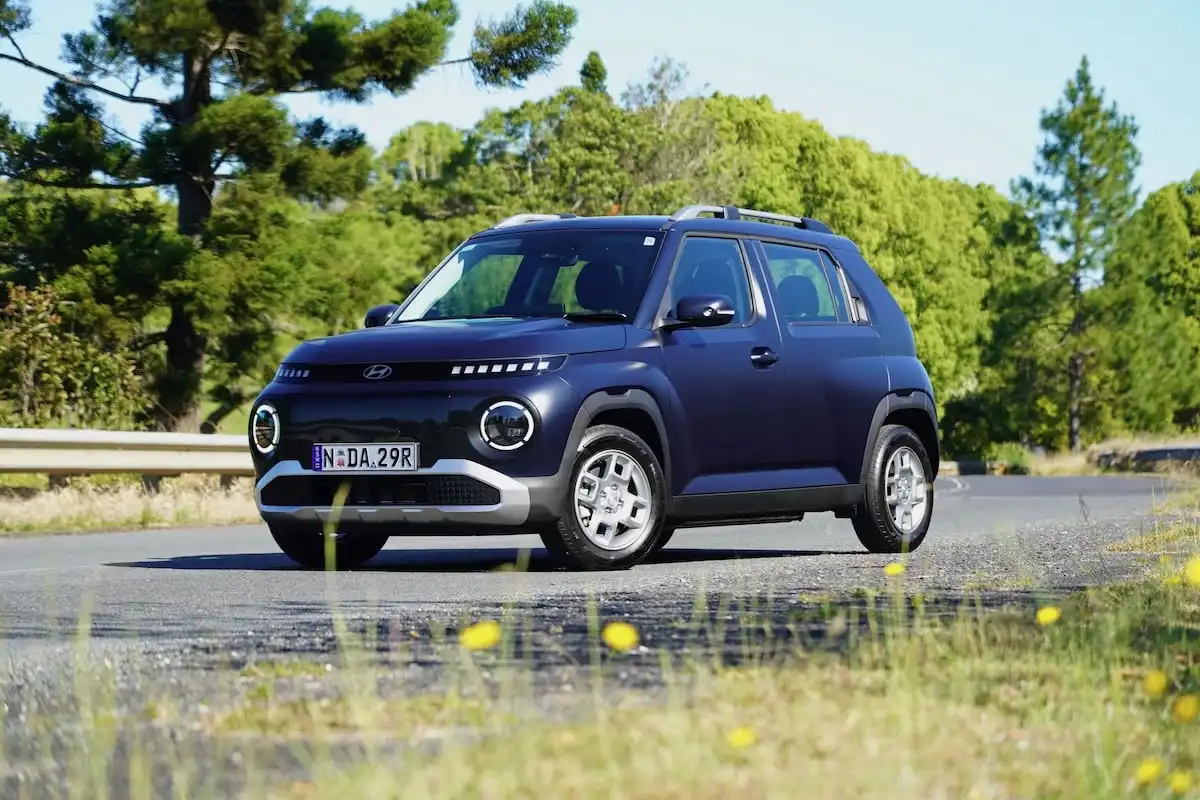It’s the sweetheart of adventurous Aussies and family buyers alike, with the latest Prado showcasing a bold new design and a lengthy list of technology upgrades to keep it on par with its major rivals.
Look beneath that funky styling package and there’s also a new platform borrowed from the almighty 300 Series and a mild-hybrid system aiming to trim down on your fuel bills.
This next-generation leap for the Prado nameplate has been accompanied by some pretty significant price increases across the range, with a base model touching down with a near $10,000 price increase while the flagship Kakadu is now $12,000 pricier.
Just how transformative has Toyota’s long list of changes been to the Prado’s everyday driveability, off-road abilities and overall appeal as one of Australia’s favourite, adventurous family haulers?
To find out, we got behind the wheel of the Prado GXL, which sits just above the entry-level GX to find out and see if it’s worth stepping higher up into the range.
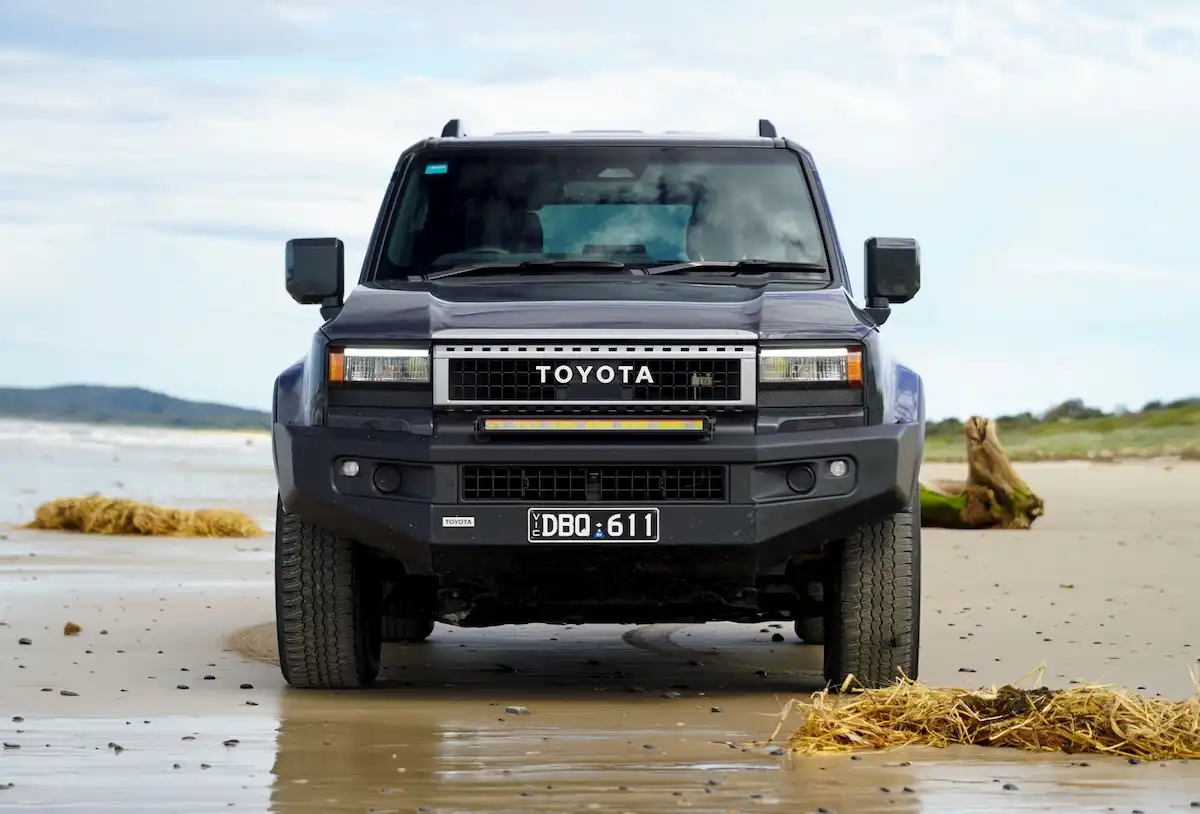
LandCruiser Prado Competition
LandCruiser Prado |
VS |
Ford Everest |
| Isuzu MU-X | ||
| Nissan Patrol | ||
| GWM Tank 500 | ||
| Mitsubishi Pajero Sport | ||
| KGM SsangYong Rexton | ||
| Lexus GX |
How Much Does the MY25 Toyota LandCruiser Prado Cost?
Prices for the MY25 Toyota LandCruiser Prado 250 Series kick off from $72,500 and stretch out to $99,990 for the range-topper.
-
LandCruiser Prado GX - $72,500
-
LandCruiser Prado GXL - $79,990 (tested)
-
LandCruiser Prado VX - $87,400
-
LandCruiser Prado Altitude - $92,700
-
LandCruiser Prado Kakadu - $99,990
These prices are subject to change and do not include on-road costs.
Our Prado GXL review vehicle also came fitted with a tow kit and Toyota’s hoopless, steel bull bar that has a built-in LED light bar priced at $2,770, not including freight nor the wire relocation harness needed for the VX and Kakadu.
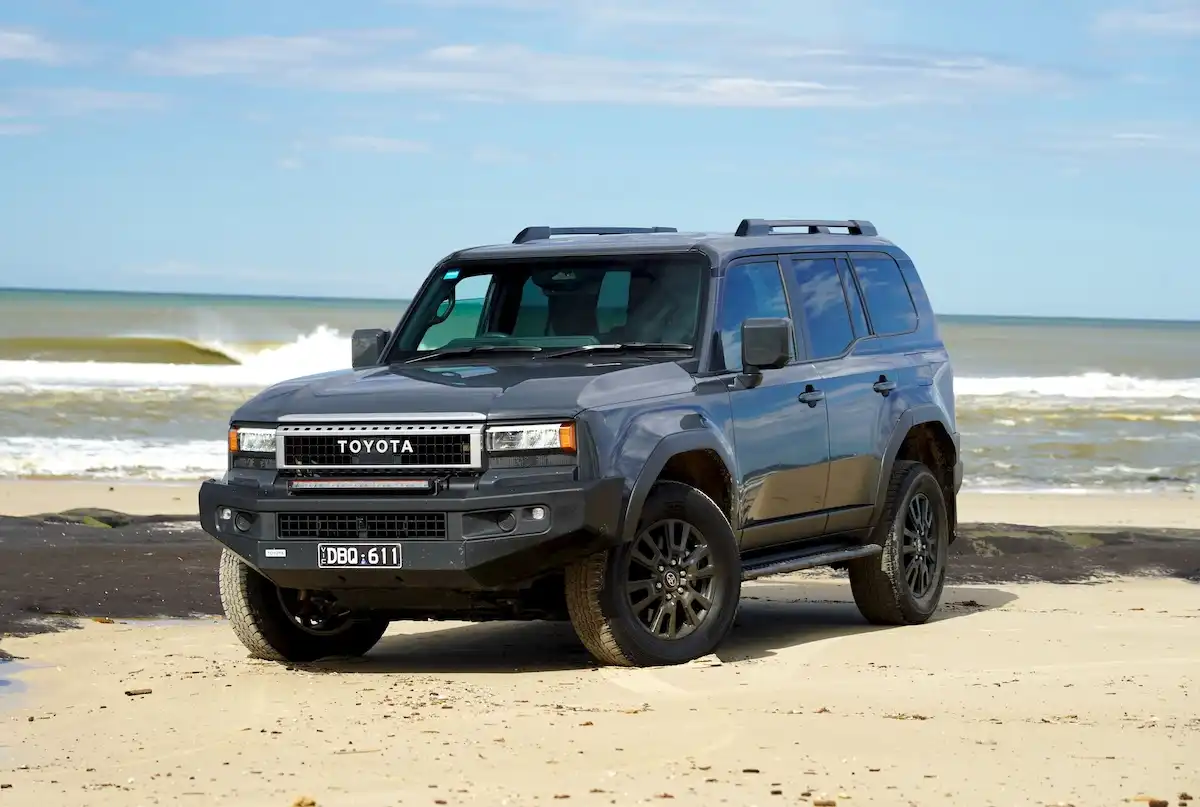
How Much Can OnlineAuto Save You?
Using OnlineAuto’s car buying service, you could save thousands on your next car with the help of our team of car-buying specialists.
Toyota LandCruiser Prado GXL Specifications
| Model Date | 2025 |
| Make | TOYOTA |
| Model | LANDCRUISER PRADO |
| Series | GDJ150R |
| Variant | GXL PREM INTER FLAT TAILGATE |
| Body | 4D WAGON |
| Fuel type | DIESEL |
| Transmission | 6 SP AUTOMATIC |
| Drive | 4x4 |
| Engine | DTFI |
| Engine capacity | 2755 |
| Engine configuration | DUAL OVERHEAD CAM / 16 valves |
| Engine RPM | 3400 / 1600 |
| Cylinders | DT4 |
| Torque | 500 |
| KW | 150 |
| Fuel tank size | 87.0 |
| Fuel usage specs | 7.9 / 0 |
| CO2 | 209 |
| ANCAP security rating | 5 |
Get in touch with one of our Car Buying Specialists today.
Request a quoteWhat Features Does the Toyota LandCruiser Prado GXL Have?
The Prado in GXL form picks up a pretty healthy range of additions over the entry-level GX.
The list of GXL-specific features is headlined by a choice of five- and seven-seat cabin layouts, a powered boot lift, roof rails, leatherette upholstery with heated & ventilated front seats, a leather-wrapped steering wheel and gear lever, a power-adjustable driver’s seat, front & rear bumpers with a silver finish, a wireless charging pad, an auto-dimming rear-view mirror and climate control for the rear of the cabin.
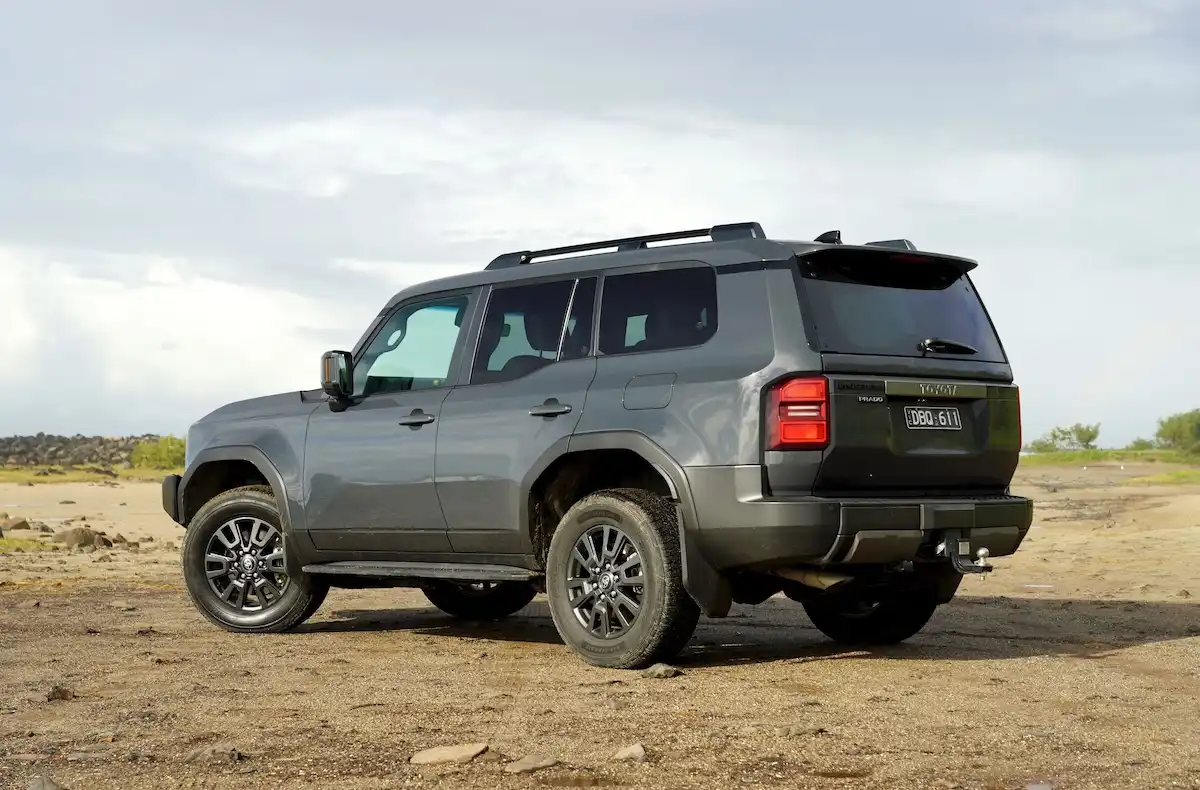
The GXL also picks up all the features you’ll find in the base model, which means it comes riding on a set of 18-inch alloys with a dark grey finish, LED headlights with LED daytime running lamps, adaptive cruise control and a surround-view monitor with front & rear parking sensors.
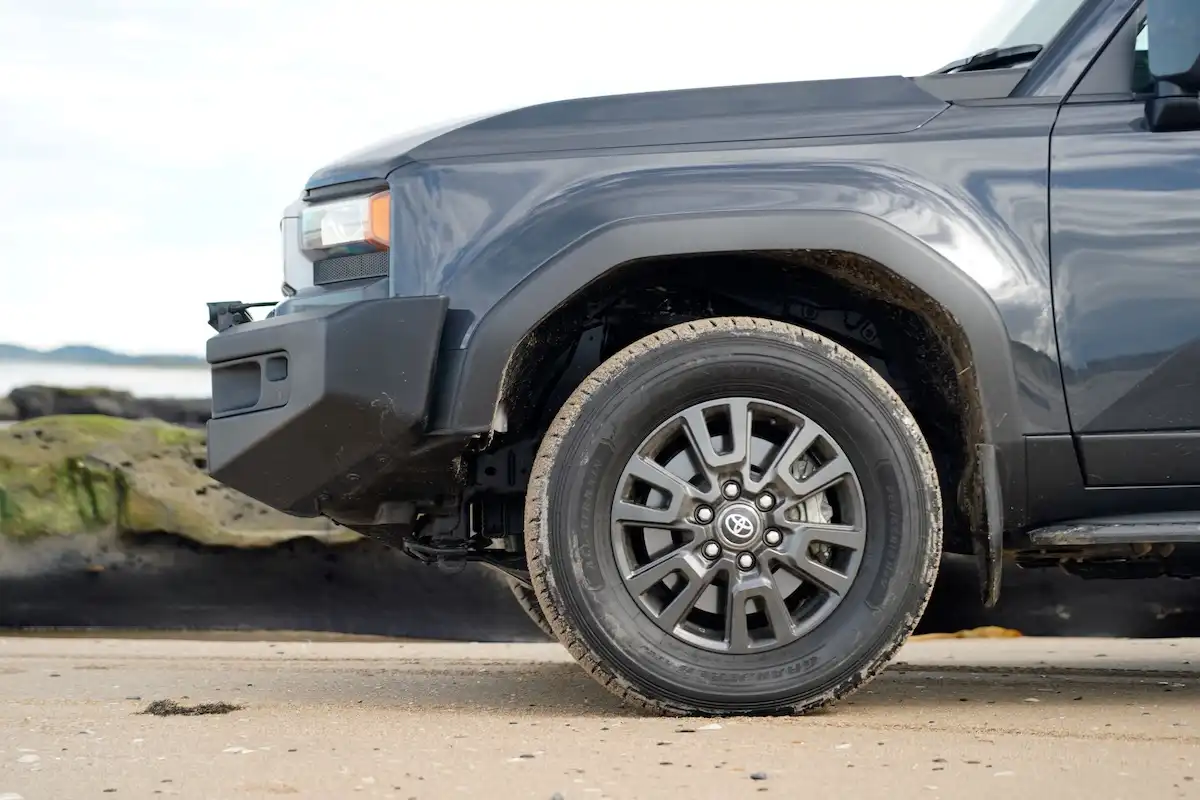
You also receive a dark grey front grille with TOYOTA lettering rather than the traditional Toyota badge, a dark finish for the wheel arches, front & rear bumpers and side sills, a locking centre differential, crawl control, a 7.0-inch digital instrument cluster and a set of rubber floor mats.
@onlineauto.com.au Find out how much you can save on your next Prado with OnlineAuto! 💰 Toyota Landcruiser Prado GXL Quick Look! 🔵2.8-litre turbo-diesel with 48V mild-hybrid assist (150kW / 500Nm) 🔵Full-time 4x4 with low-range transfer case and locking centre diff standard 🔵7.6L per 100km claimed fuel economy figures 💬 Talk to one of us today & get a great deal with OnlineAuto! Detailed Car Review: https://www.onlineauto.com.au/toyota/landcruiser-prado/2025-toyota-landcruiser-prado-gxl-review #OnlineAuto #Prado #Toyota #Landcruiser #CarReview #TestDrive#BestDeals #NewCar #cartok ♬ original sound - OnlineAuto.com.au
Toyota LandCruiser Prado Connectivity & Infotainment
Toyota goes a decade or more between introducing a new generation Prado, meaning the outgoing 150 Series was feeling a bit ancient when it came to in-car tech.
As a result, one of the biggest upgrades for the 250 Series Prado has been a complete overhaul of the infotainment technology suite to bring it closer in line with rivals and - hopefully - future proof it for another decade.
All 250 Series Prado variants now come packaged with a 12.3-inch touchscreen infotainment system sitting atop the dashboard, which serves as a serious upgrade over the outgoing unit, both in terms of screen real estate and functionality.
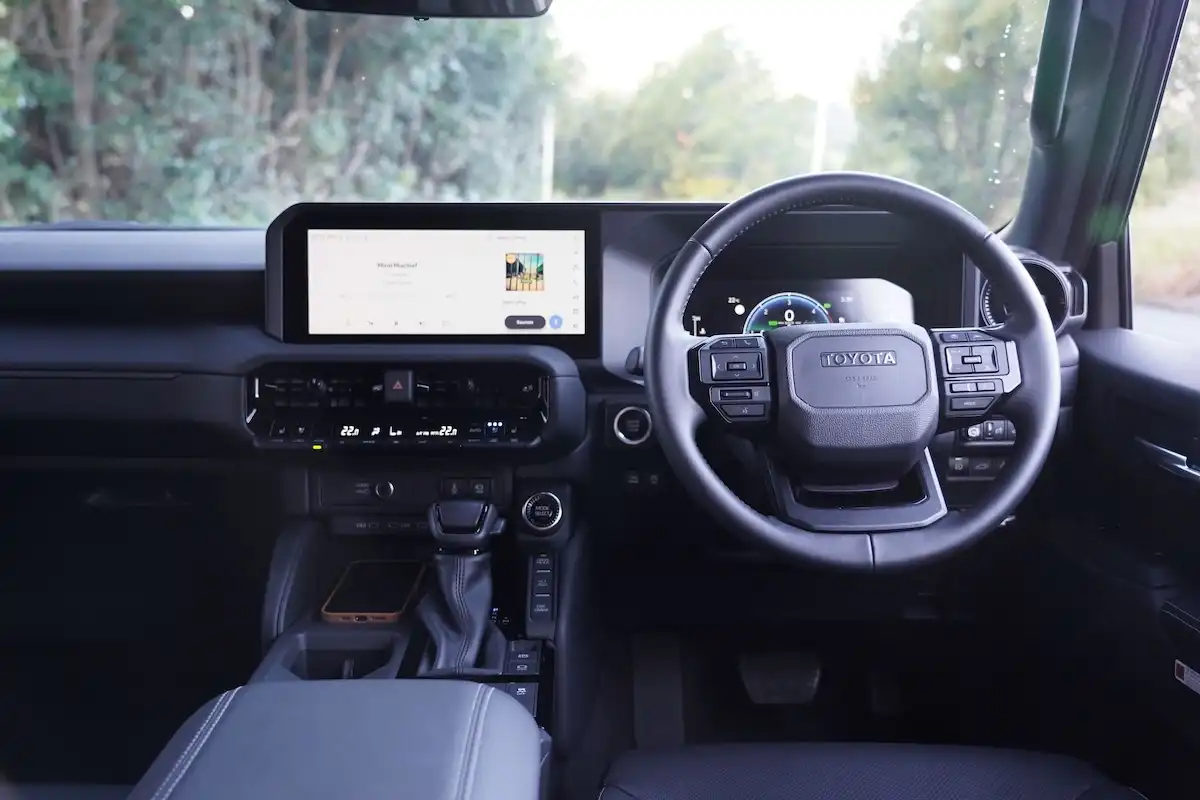
Toyota’s 12.3-inch display offers high brightness levels, a fast refresh rate and remains easy to operate thanks to a clean and simple menu layout with permanent shortcuts on the right-hand side of the display.
The Prado’s 12.3-inch infotainment system is packaged with AM/FM & DAB+ digital radio as well as factory satellite navigation with live traffic information, four USB-C ports and a HDMI port.
There’s also a 10-speaker sound system packaged into the mix, which provides solid power and great sound quality for a base unit, meaning you won’t be punished for skipping higher variants with the 14-speaker JBL unit.
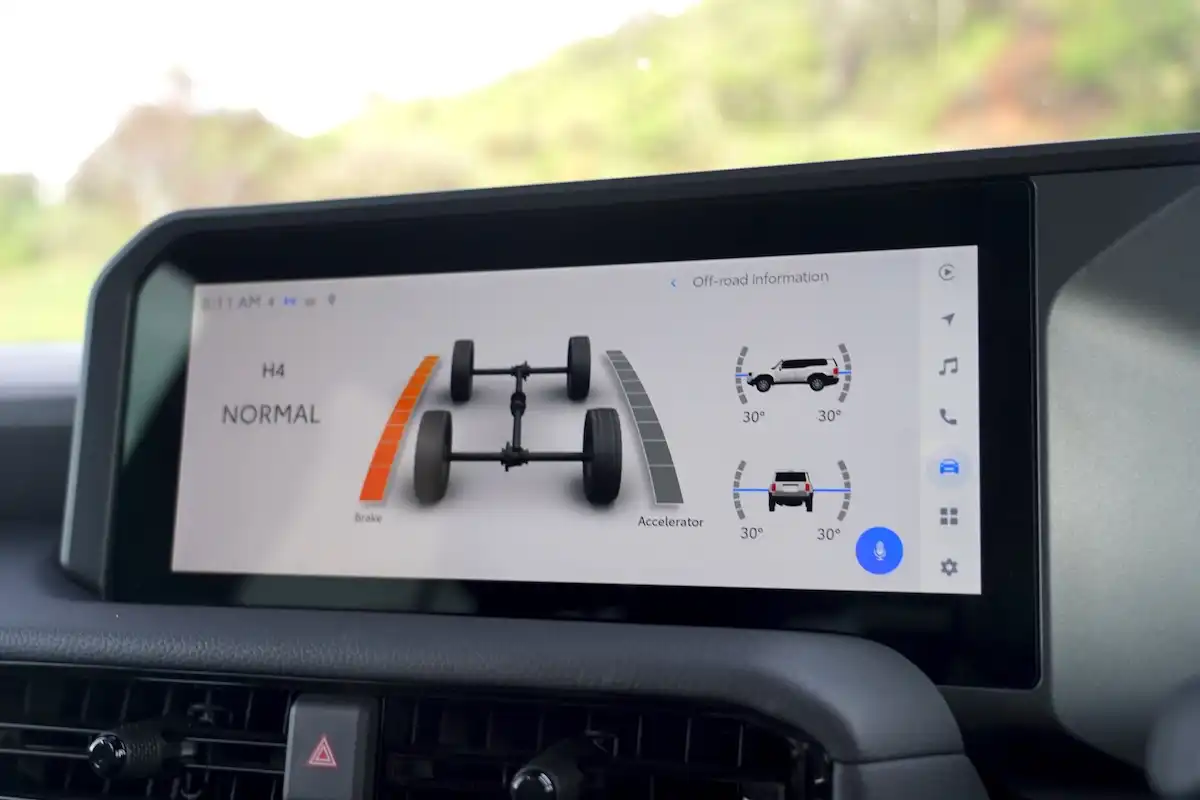
The Prado is also equipped with Toyota’s connected services suite, with buyers receiving a 12-month subscription from the date of collection.
All up, Toyota has taken a much-needed step in the right direction with the infotainment tech bundled into the Prado while surprising us with the quality of its sound system for a ‘base’ spec unit.
Does the Toyota LandCruiser Prado Have Wireless Apple CarPlay & Android Auto?
Potential buyers will be pleased to know that Toyota’s technological overhaul with the latest Prado has extended to wireless smartphone mirroring for both iOS and Android ecosystems.
You can now climb aboard the Prado and leave your phone in your pocket, because the updated infotainment tech now allows for wireless Apple CarPlay & Android Auto connections or via the four USB-C ports in the front cabin.
Connecting to the Prado’s infotainment system is a quick and simple process and we experienced no drop-outs in connection, even when tested with multiple wireless phone connections simultaneously.
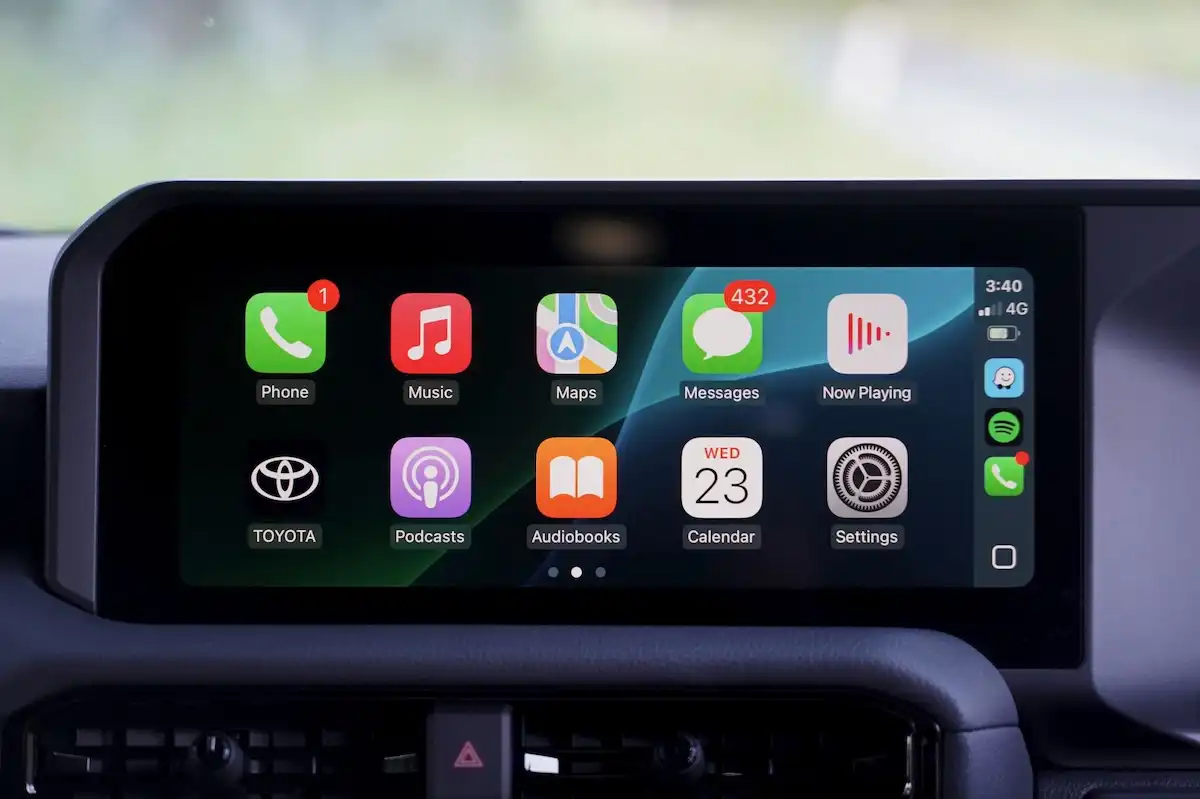
Is the LandCruiser Prado GXL Comfortable to Drive?
The Prado remains an almighty package for almost every road condition Australia can throw at it while becoming more user-friendly and civilised on a daily drive around town.
While the initial design ethos behind the Prado carries over in its latest form, the 250 Series has better table manners than its replacement and isn’t quite as rudimentary behind the wheel.
This is best exemplified by the electronic assistance for the steering rack, which makes it a far more user-friendly package when navigating lock-to-lock turns in a car park - the difference really is night and day in tight confines.
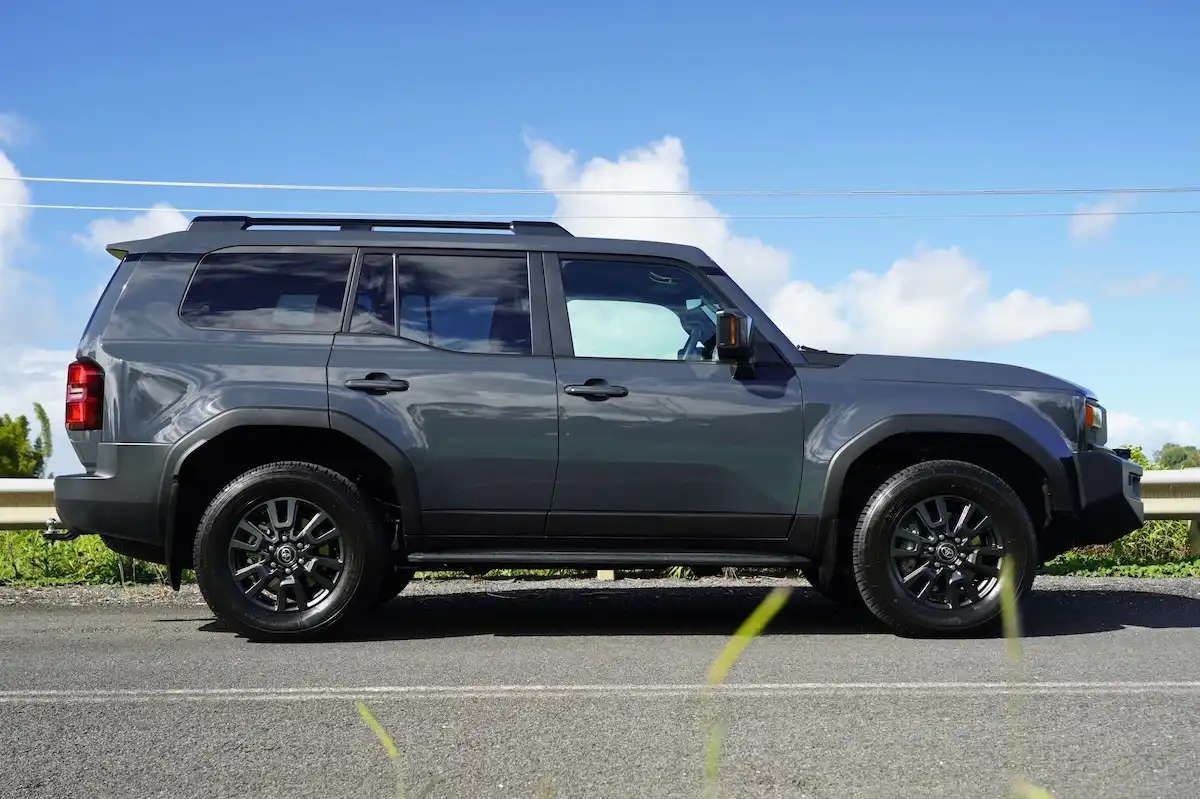
Under the bonnet, the Prado packs a 2.8-litre four-cylinder turbo-diesel unit paired with a 48V mild-hybrid assist, which steps in when you come to a halt for short periods, powering auxiliary systems like the air conditioning without needing to run the engine.
The mild-hybrid assist also helps to make acceleration off the line a smoother experience than its replacement, thanks to 65Nm of torque from the motor generator.
Combined power outputs for the Prado 250 Series stand at 150kW of power, with the 500Nm of peak torque stepping in from 1,600rpm.
The Prado’s acceleration chops are solid while 500Nm of torque feels considerable, though the curve really flattens out as you stretch high up into the rev range, making it feel a little undergunned when you really need it.
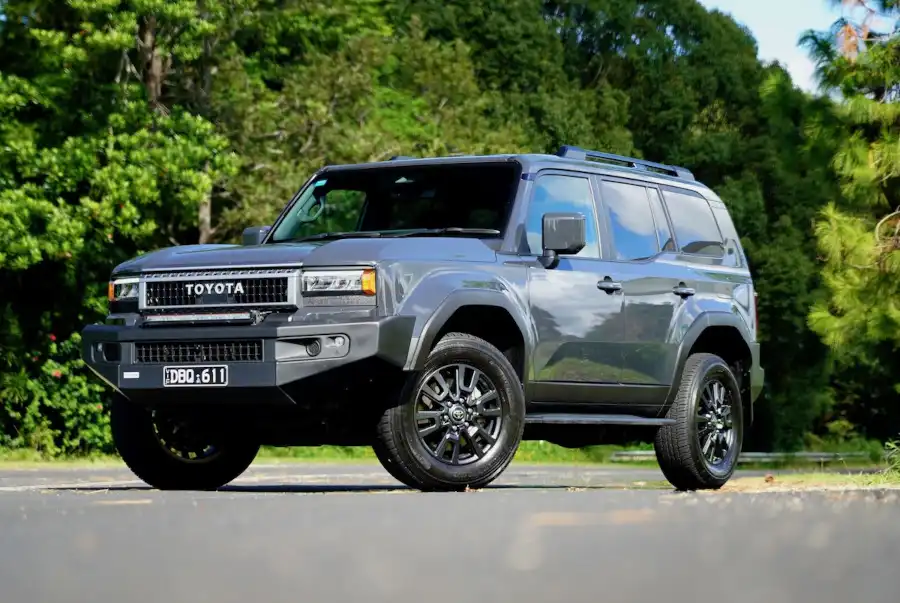
Power is thrown to all four wheels via a new eight-speed automatic transmission, which offers two extra gears over the outgoing 150 Series and particularly slick shifts that position you in the healthiest part of the torque band.
Toyota’s long list of upgrades for the 250 Series has, however, added considerable weight to the equation - to the tune of 2,535kg in the GXL.
This is most noticeable when you’re cornering at moderate speeds, where it’s hard to escape a considerable amount of body roll.
That said, when you’re staying well within its limits and driving on a mix of town and country roads, the Prado feels like a near bullet-proof package.
Underneath, the double wishbone front and four-link rigid axle - with stabiliser bars front & rear - handles the worst that Aussie roads can throw up without breaking a sweat, particularly with the help of the 18-inch rims.
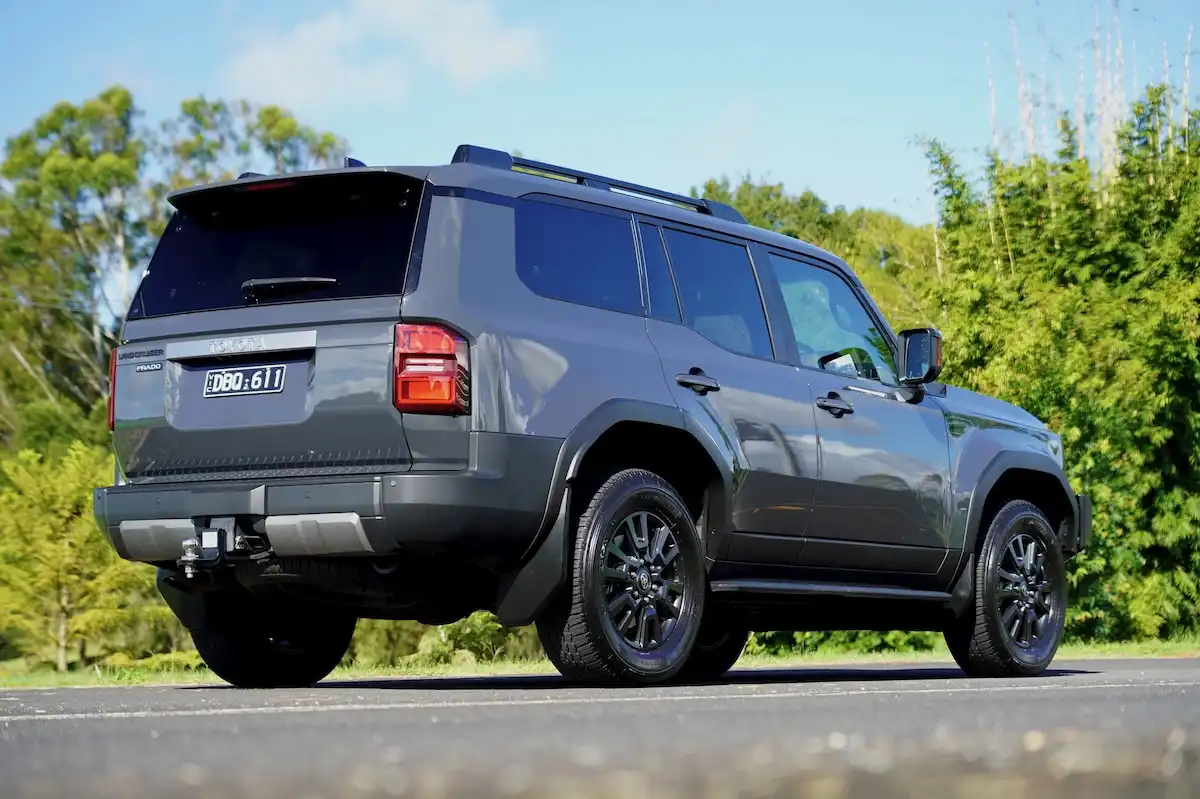
We’d argue that the smaller 18-inch wheels are the pick for Aussies looking to put their Prado to use in the Great Outdoors, with the added support from the tyre sidewall helping to cushion things when the going gets tough.
The Prado’s hardcore, off-road potential means that some bumps can feel a bit choppy around town, though it’s a package that instils confidence when you’re tumbling down a B-road at speed.
As a result, it’s an almighty long-distance tourer on country roads and highways alike, chewing up kilometres, spitting them out and asking for more.
All up, Toyota has done well to make the rough-and-ready Prado a more civilised and user-friendly town driver without sacrificing anything in the way of its core DNA, though some potential buyers might be a bit underwhelmed by the performance of the engine when it’s really pushed.
This is particularly important for Aussies looking to tow with their Prado, which we’ll unpack a bit more in the upcoming payload and towing capacity section of this review.
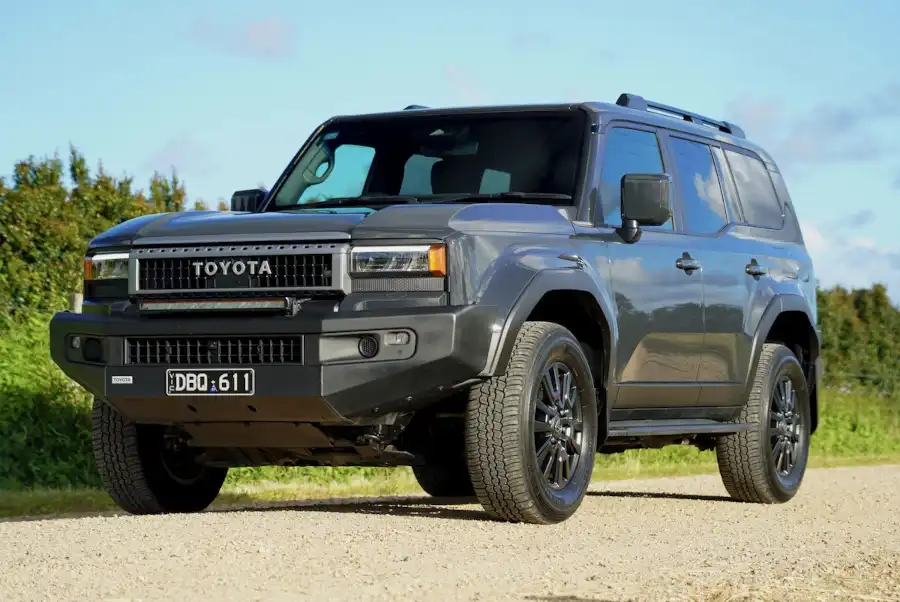
Is the LandCruiser Prado a Good Off-Roader?
You bet it is - Toyota wouldn’t release a next-gen Prado if it couldn’t confidently tackle the dirt.
While the Prado in GXL form isn’t the most off-road-focused variant in the range, it remains a seriously strong performer that will meet the needs of all but the most hardcore buyers.
The Prado GXL hits the ground running with its hearty 2.8-litre turbo-diesel producing 500Nm of torque, a low-range transfer case and a locking centre differential as standard.
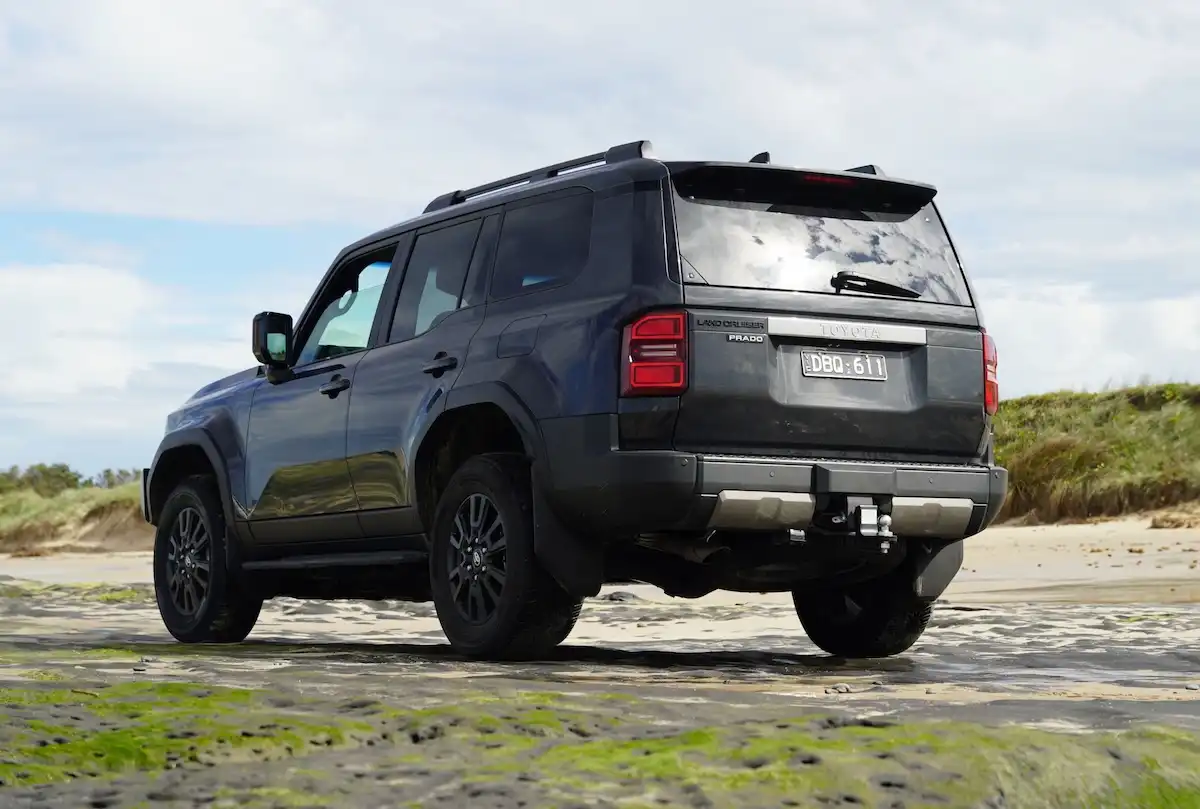
Toyota’s TNGA-F platform the 250 Series Prado shares with the 300 Series provides acres of wheel articulation, while the downhill assist and crawl control systems are easy to engage when you’re presented with a steep, slippery incline.
Higher-ranking members of the Prado range pick up electronic and Torsen limited-slip differentials in the Altitude and Kakadu, respectively, as well as a multi-terrain select system with an off-road driving monitor and a clever stabiliser bar disconnect system.
-
Ground Clearance: 210mm
-
Wading Depth: 700mm
-
Approach Angle: 31 degrees
-
Departure Angle: 17 degrees
-
Breakover Angle: 25 degrees
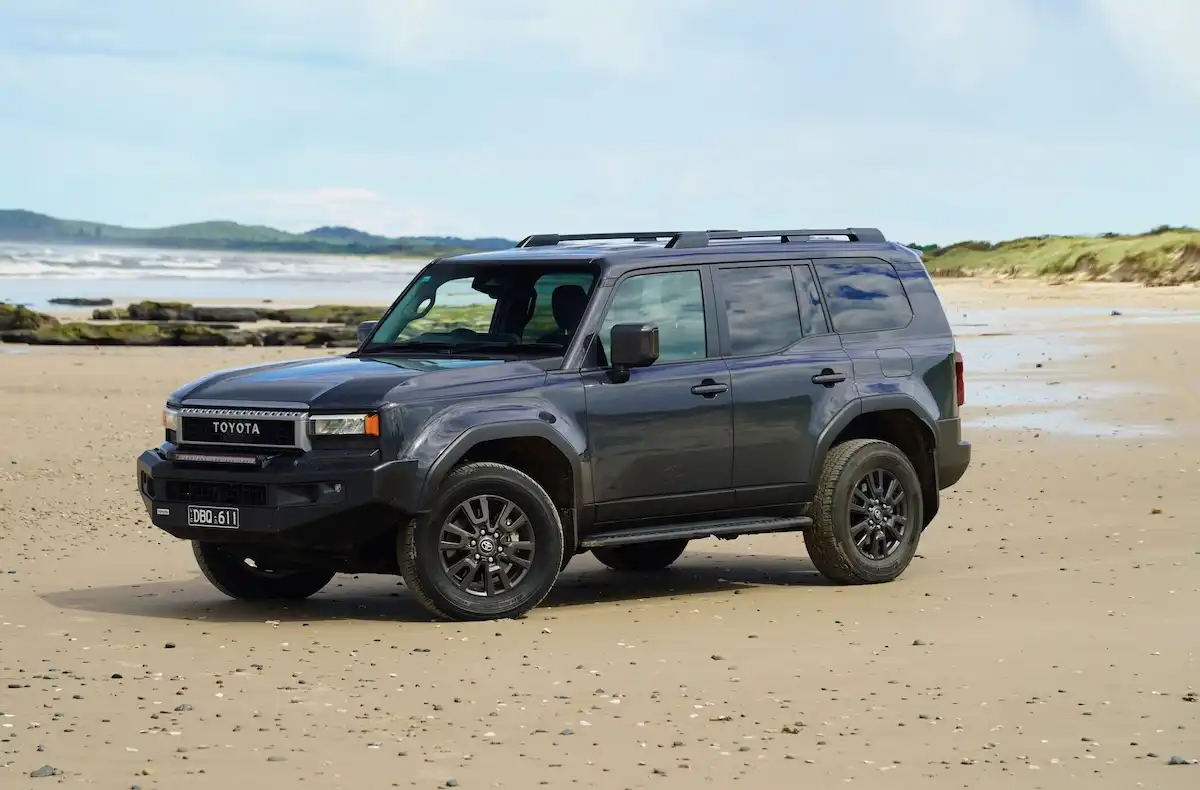
Is the Toyota LandCruiser Prado Fuel Efficient?
While the Prado now comes powered by a turbo-diesel unit with mild-hybrid assistance, fuel efficiency improvements are marginal, at best.
Toyota’s hybrid expertise is well-known, though there’s no cheating the laws of physics when it comes to the Prado GXL’s 2,535kg kerb weight figures.
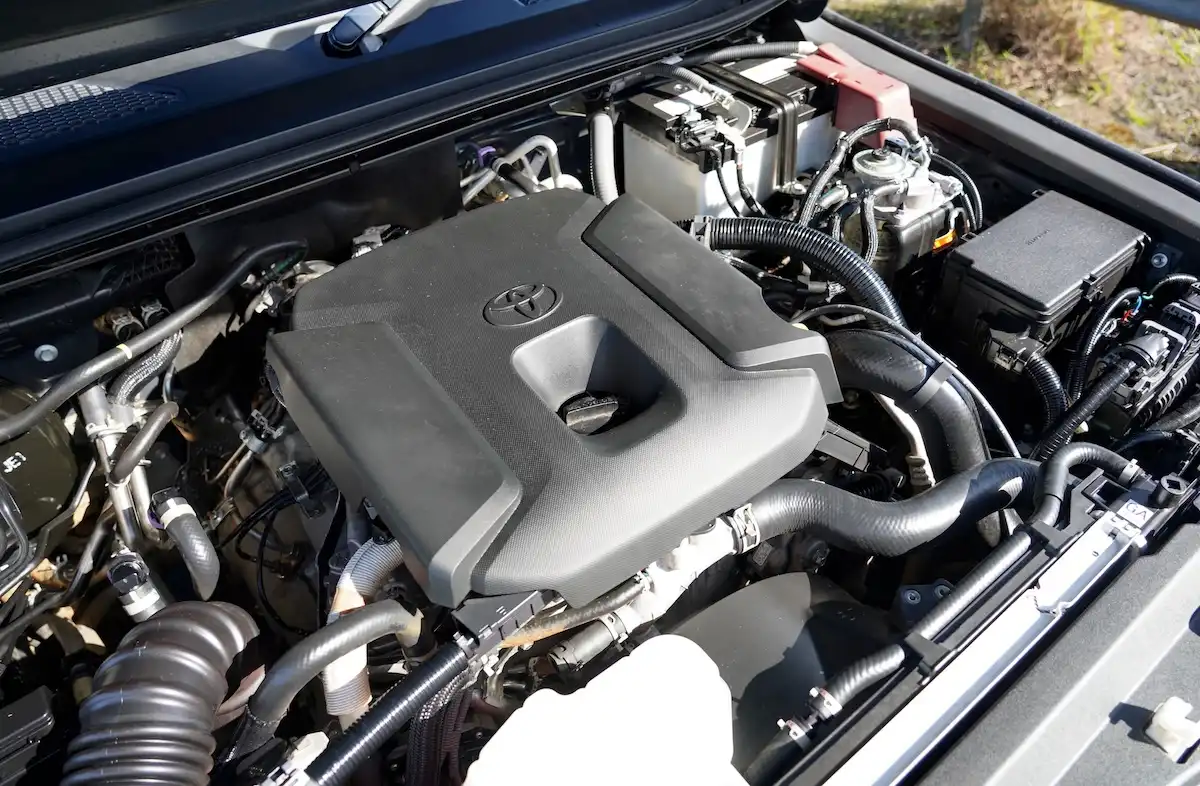
On a combined cycle, Toyota says the Prado will consume 7.6L per 100km on a combined cycle.
During our time behind the wheel, we covered 1,200km of town, country and highway driving and were able to manage 8.9L per 100km switching between normal and eco drive modes.
In our experience, it’s pretty difficult to match Toyota’s official figures, though not impossible with a feather-weighted right foot.
The Prado GXL’s 2.8-litre turbo-diesel unit is fed by a 80L main fuel tank, with a 30L sub tank sitting as a reserve that brings total capacity to 110 litres alongside a 17.4L tank of AdBlue.
-
Combined Cycle: 7.6L per 100km (claimed)
-
Combined Cycle: 8.9L per 100km (tested)
-
City Cycle: 8.5L per 100km
-
Highway Cycle: 7.0L per 100km
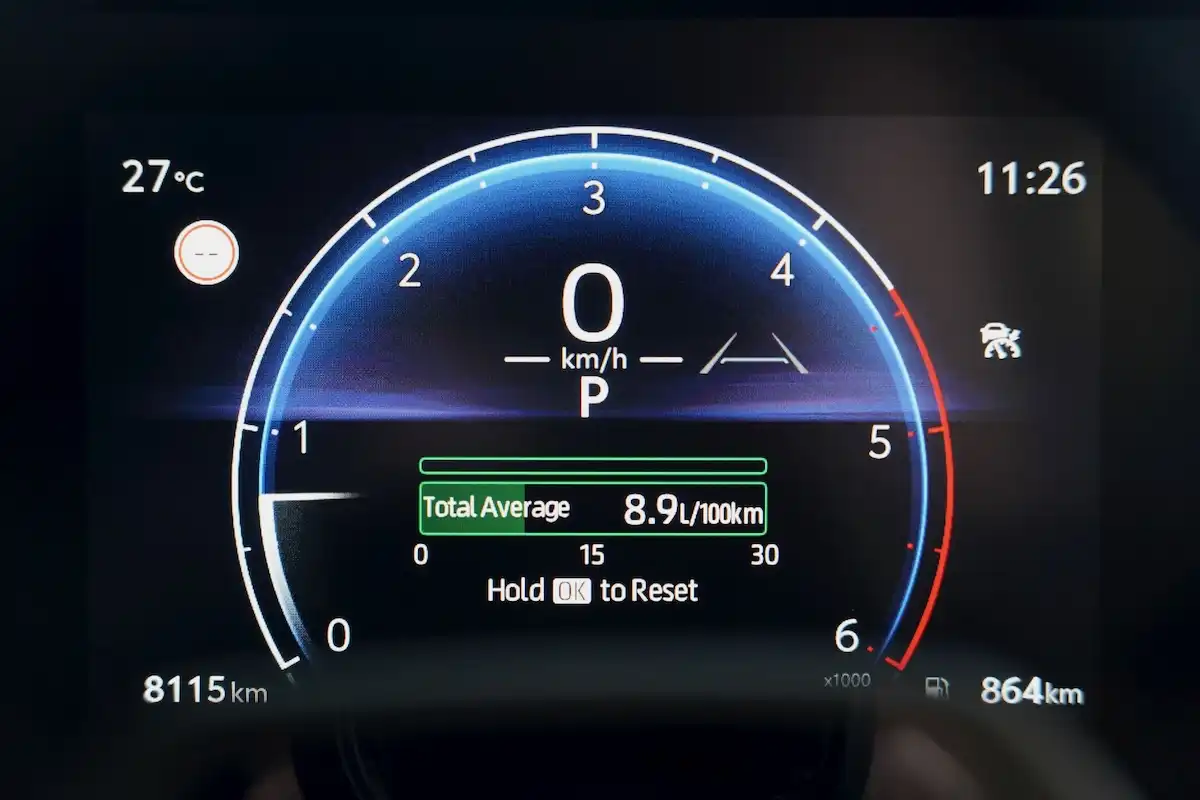
How Much Can the Toyota LandCruiser Prado GXL Carry & Tow?
While Toyota has raised the Prado’s braked towing figures up to the 3.5 tonne benchmark, you’ll need to pay close attention to the payload left over if you’re planning on using the Prado as your primary towing workhorse.
That’s because if you’re loading the Prado GXL up with a 3,500kg trailer and factor 350kg of that being added onto the towball download, you’re left with a very limited 265kg worth of payload.
Keep in mind that remaining payload needs to cover the weight of you, your passengers, any added hardware on the body like a bull bar or roof racks and, of course, any gear you want to bring along for the ride.
As a result, we wouldn’t recommend pushing the Prado to the extremes when pushing and would suggest a more powerful vehicle overall for the task of lugging around 3.5 tonnes, though it’s confident when hitched up to more modest loads.
-
Kerb Weight: 2,535kg
-
Braked Towing Capacity: 3,500kg
-
Gross Vehicle Mass: 3,150kg
-
Payload: 615kg
-
Gross Combination Mass: 6,600kg

Is the Toyota LandCruiser Prado GXL Practical and Spacious?
Step inside and you’ll see the Prado has become a far more modern package inside, all while retaining its family-carrying capabilities.
First impressions of the Prado’s cabin are great, with the GXL picking up some added luxuries like the leatherette upholstery with heated & ventilated seats that make it feel nice and upmarket.
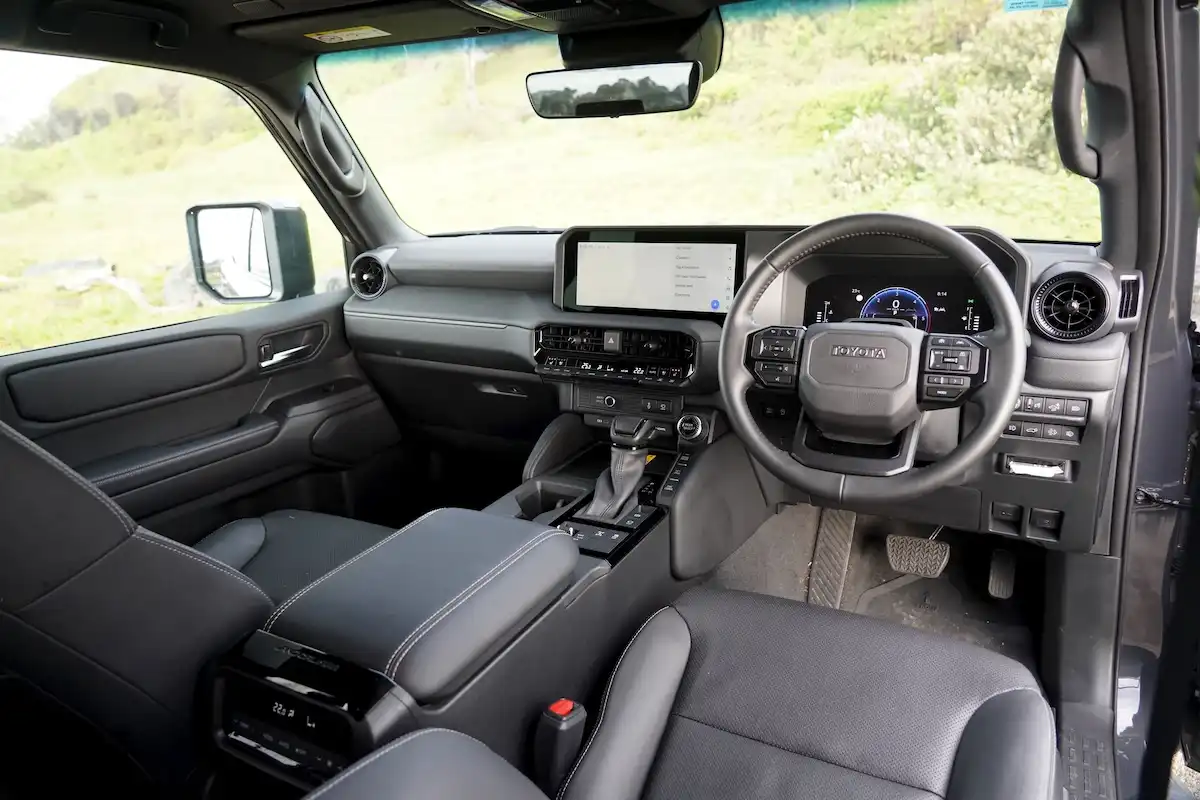
Overall, the 250 Series’ boxy design carries over inside the cabin, which adds a unique feel compared to the rest of the Toyota range, thanks to the squared-off arrangement for the air vents, infotainment surrounds and even the cupholders.
Even the tallest of drivers won’t have a problem getting comfortable in the front of the cabin thanks to the lofty roofline, while the boxy design allows for large windows and decent visibility, particularly at the rear.
There’s a large range of adjustment in the driving position, though we couldn’t get the steering wheel in our preferred position and were forced to sit closer than we’d typically choose.
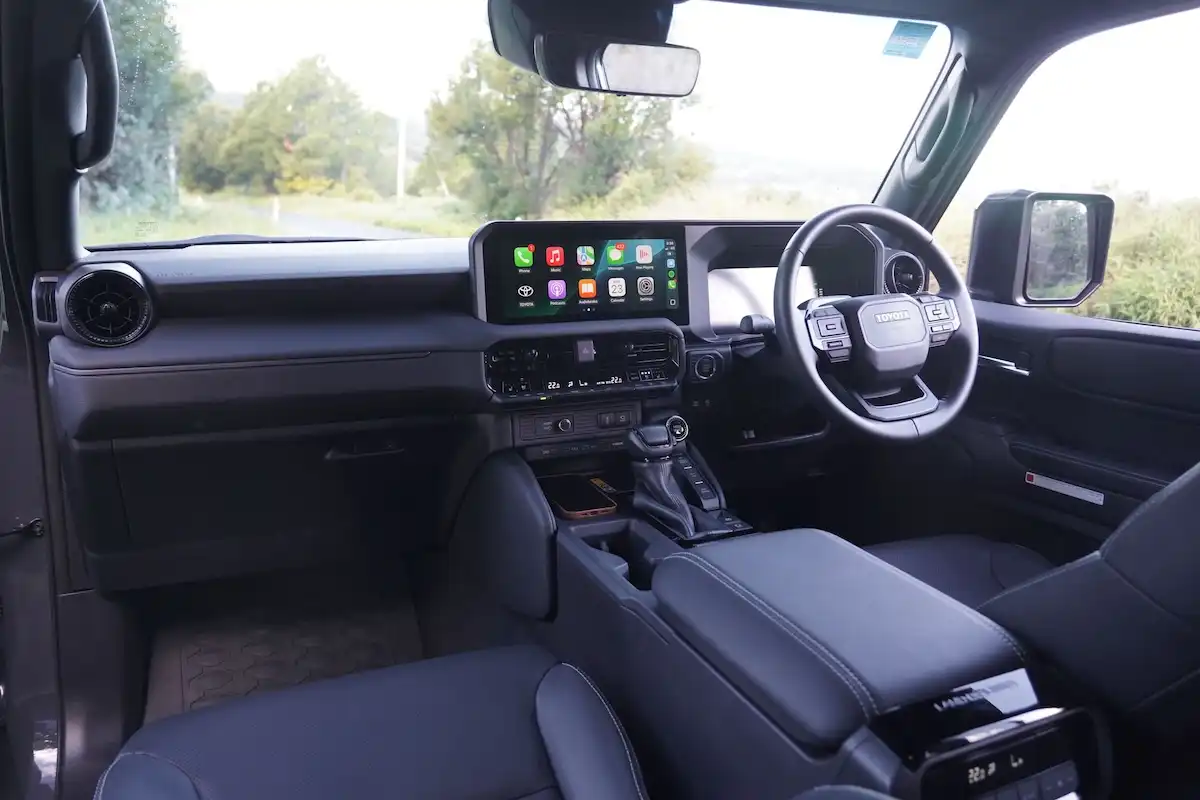
The driving position is somewhat cocooned between the centre console and the tall door surrounds, which we felt a bit restrictive, but other members of the team loved the added, cosy sense of security.
Importantly for long trips, both of your elbows pick up some soft, faux leather finishes.
In terms of storage in the front, there’s a large open tray behind the gear lever that houses a charging pad, a pair of cupholders, tonnes of space inside the folding armrest and a door bin with limited storage for big bottles, but a long and narrow section for other loose items.
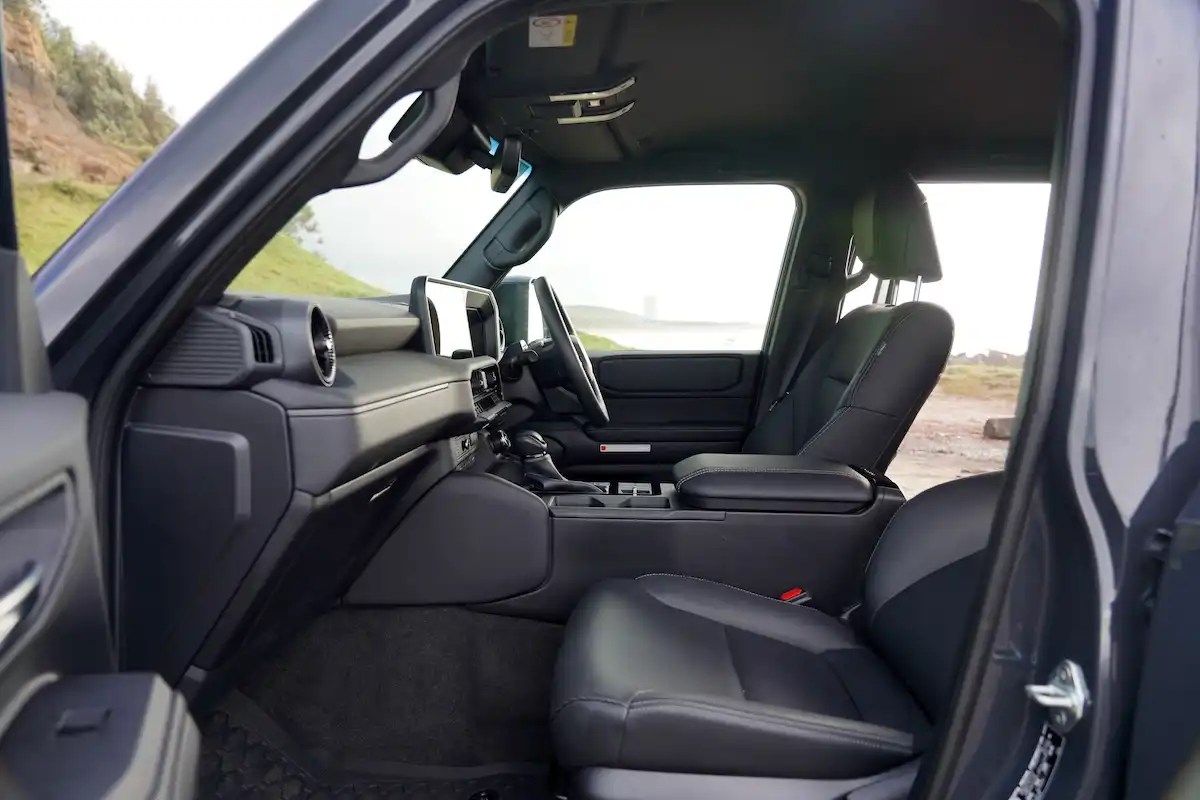
Move to the rear of the cabin and the Prado’s second row is more than up to the task of carrying even adults, with easy access into the cabin for kids with the side steps and accessible grab handle.
As you might imagine, the Prado’s massive footprint has lent itself nicely to the task of ferrying around families, with acres of headroom, no shortage of legroom and tonnes of cabin width for three-abreast seating.
It’s a pretty uninspiring, blacked-out affair in the case of the GXL, though, amenities like dedicated climate controls, two USB-C ports and a 12V power outlet as well as the folding armrest with cupholder tick all the important boxes.
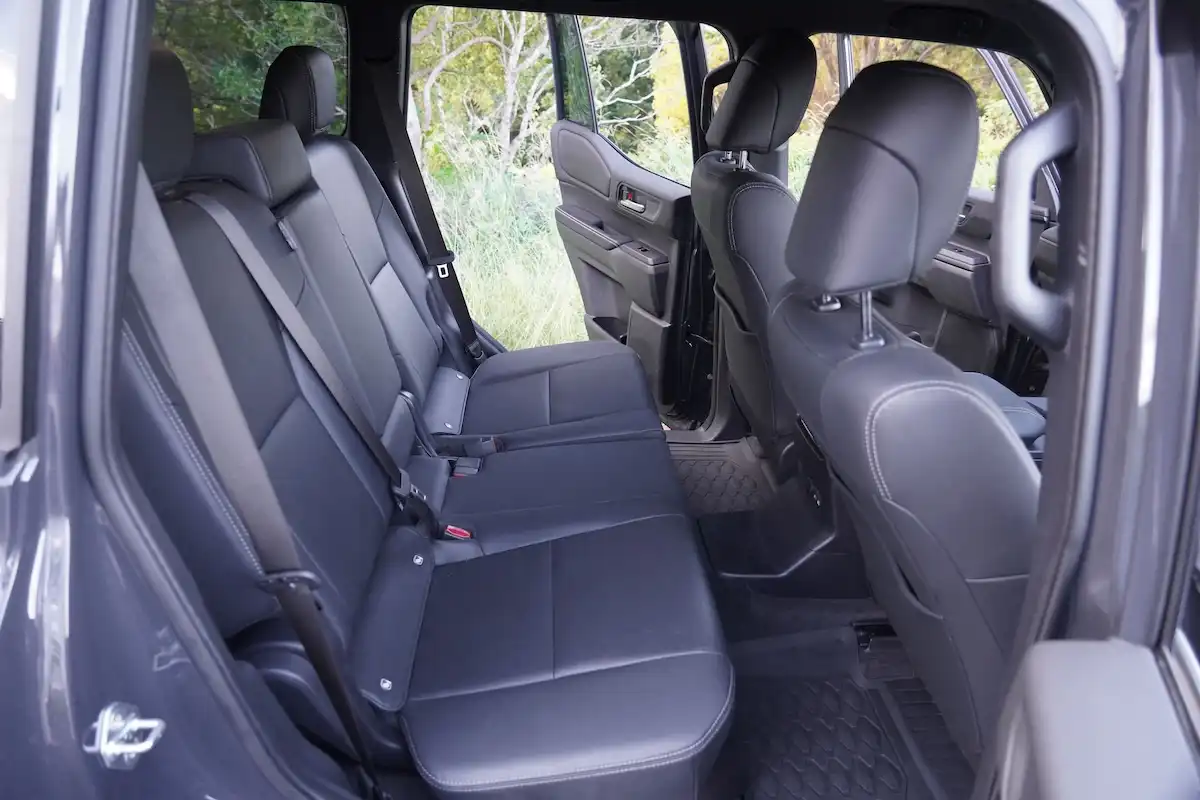
The Prado’s second row also offers a nice angle of recline to get comfortable on longer trips, while two pairs of ISOFIX anchors are hidden neatly at the seat base.
Accessing the third row is pretty straightforward, with the second row tumbling forward with a grab of the handle and folding toward the driver’s seat.
The Prado’s third row is best suited to kids, of course, though the experience is actually pretty nice thanks to some big windows, as well as a pair of cupholders and USB-C ports on either side of the cabin.
All up, the Prado treats those in the front and rearmost of the cabin with respect, while the special touches to the GXL’s cabin offer up a premium nature without upgrading to pricier variants.

How Big is the Toyota LandCruiser Prado GXL’s Boot?
Strangely enough, the seven-seat Prado’s boot has been one of the biggest points of contention for the whole package.
Open up the tailgate, and on first impressions at least, it’s not hard to see why.
To make way for the mild-hybrid’s battery system, the boot floor has been raised considerably while the three-row seat design feels a little clunky and impractical.
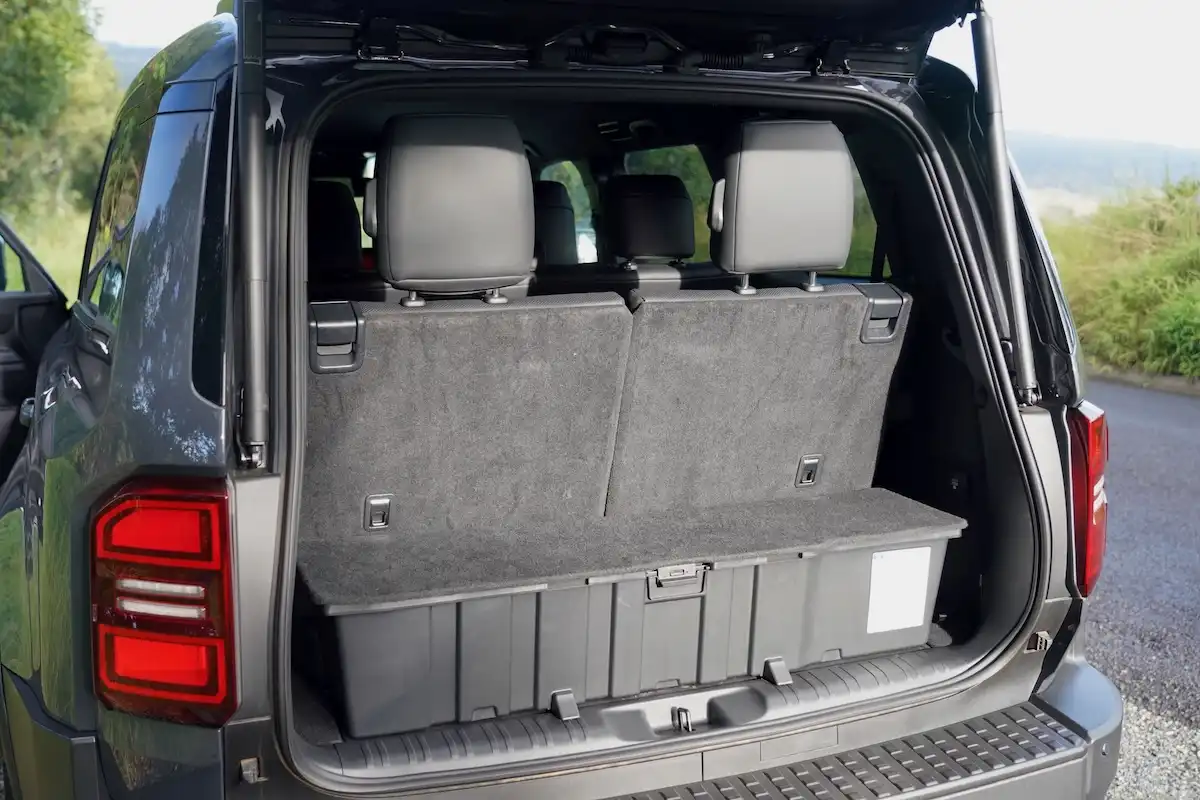
That said, the recent addition of a five-seat Prado GXL certainly helps to widen its appeal with buyers looking for a big boot.
In terms of volume, the Prado GXL’s boot measures 182L, not including the added real estate in the 60L cargo box, which feels particularly low-rent when considering the sticker price.
This arrangement is unusual, to say the least and far from what you’d call visually appealing, though you can fit a handful of school bags with the third row standing.
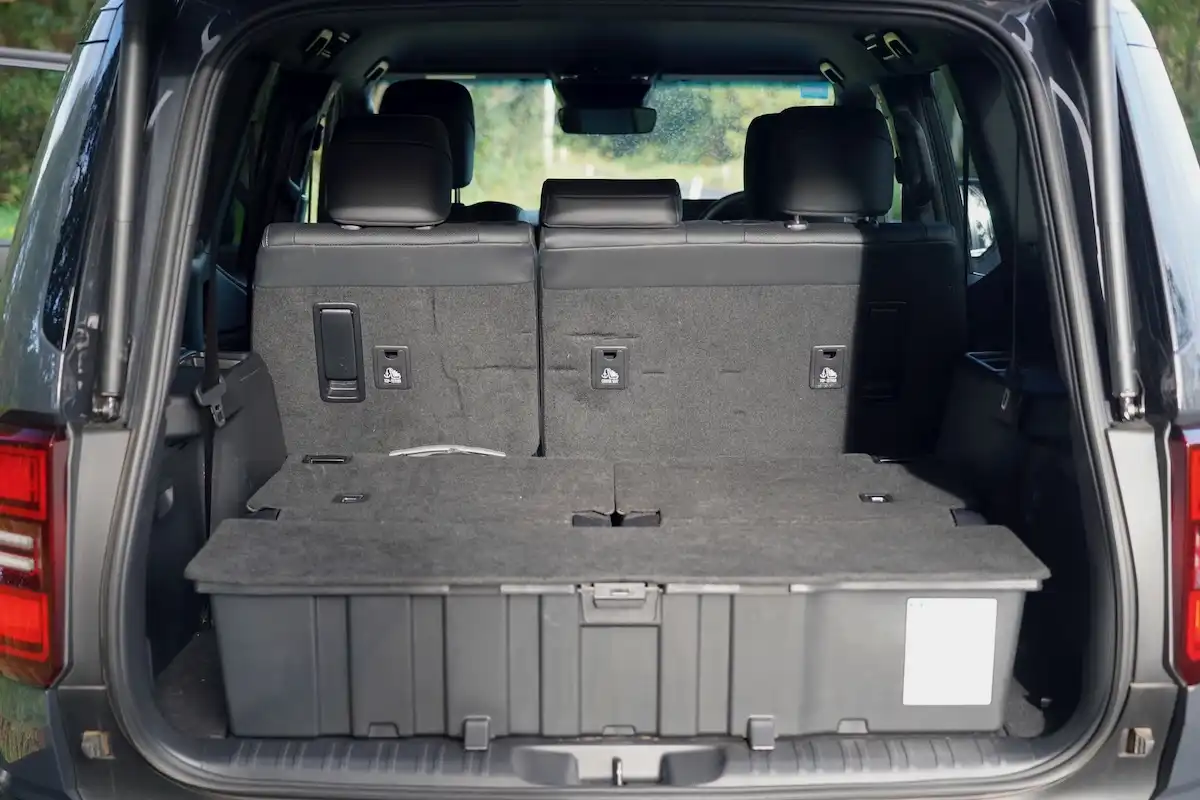
Fold the third row down and you’ll unlock 906L worth of real estate in the back of the Prado, though you’ll need to keep an eye out for things falling through the seat gaps, with maximum boot space figures totalling 1,829L.
Quickly pulling something from the back of the boot is made easy by the ever-practical little rear window hatch, with some tie-down points at the back of the third row seats and a 100W AC power outlet helping to soften the blow.
-
Boot Space Minimum: 182L (not including cargo box)
-
Boot Space Two-Rows: 906L
-
Boot Space Maximum: 1,829L
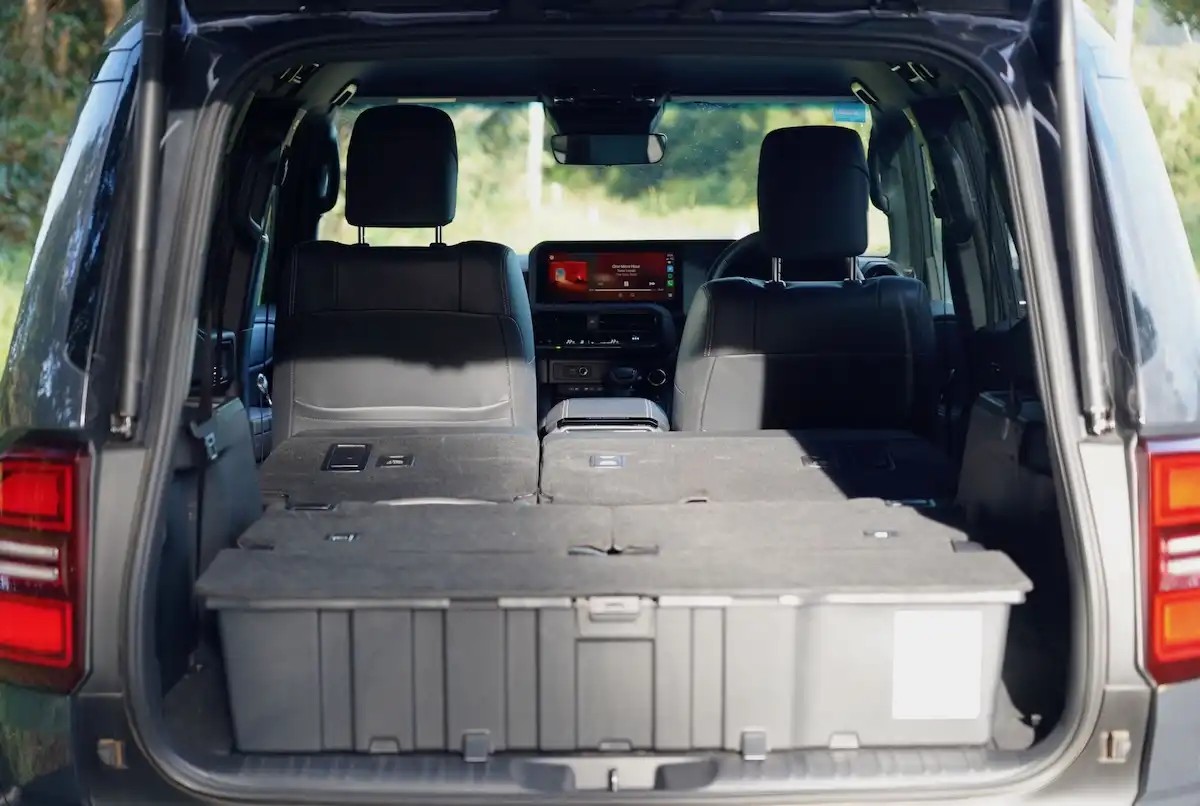
Is the Toyota LandCruiser Prado GXL Safe?
Toyota has packaged the Prado range with a lengthy list of safety equipment.
All members of the Prado lineup come packaged with autonomous emergency braking with cyclist, pedestrian, vehicle and motorcyclist detection.
There’s also adaptive cruise control, lane-trace assistance, blind-spot monitoring, rear cross-traffic alerts, emergency steering assist, driver attention alerts, low-speed acceleration suppression, safe exit alerts, intersection collision avoidance, deceleration assist, traffic sign detection, an emergency driving stop system, curve speed reduction and a rear parking support brake.
The only piece of safety equipment reserved for higher-ranking members of the Prado lineup is tyre pressure monitoring.
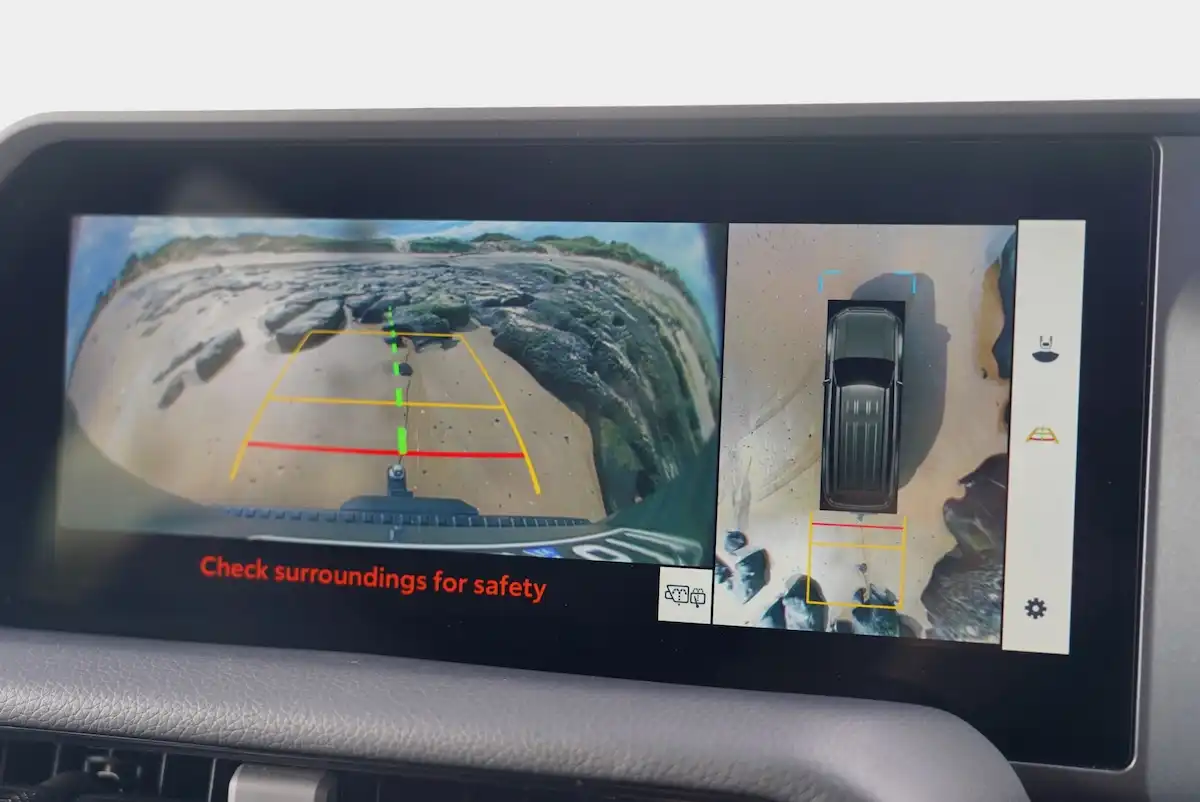
Does the Prado Have an ANCAP Safety Rating?
The Prado has picked up a five-star ANCAP safety rating after testing in 2024 saw it score the following marks.
-
Adult Occupant Protection: 85%
-
Child Occupant Protection: 89%
-
Vulnerable Road User Protection: 84%
-
Safety Assist: 82%

What Warranty Does the Toyota LandCruiser Prado Come With?
Toyota offers the LandCruiser Prado range with a five-year/unlimited-kilometre warranty.
Prado buyers can extend this warranty, specifically for the engine and driveline, out by an additional 12 months if they keep the vehicle serviced within the Toyota dealer network, out to seven years in total.
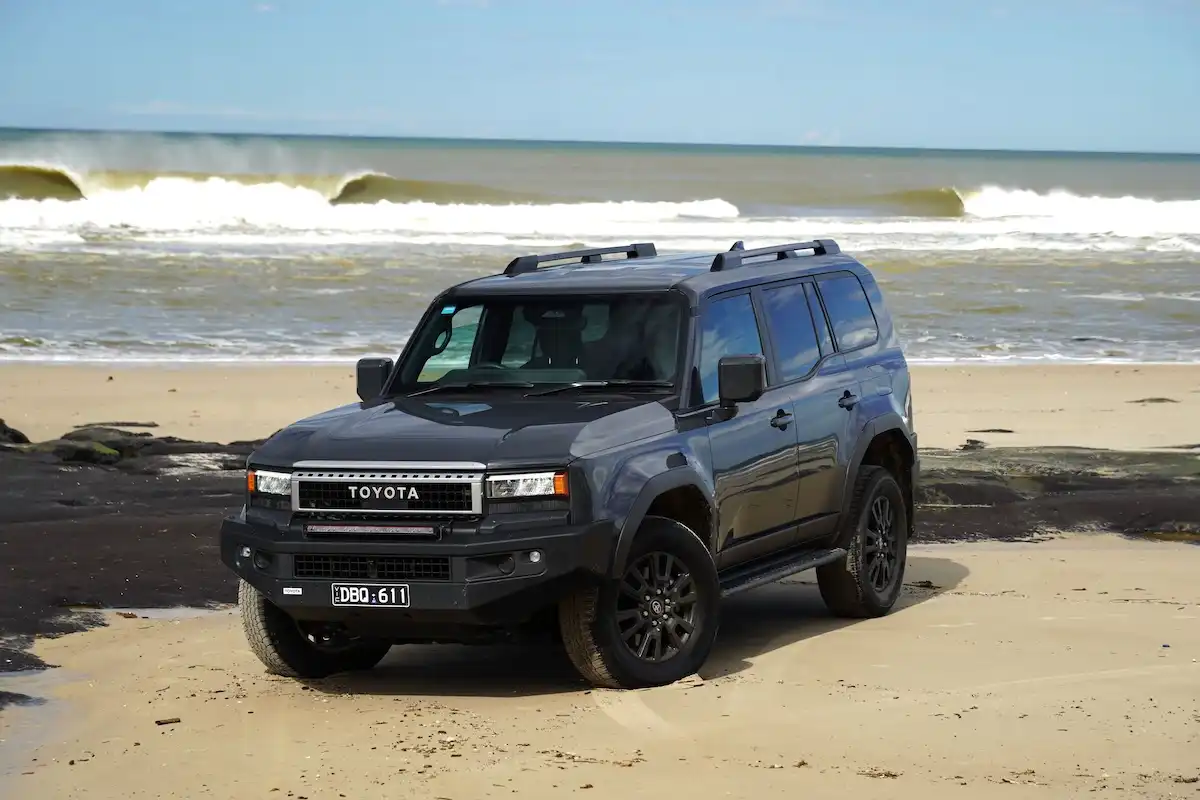
Three years of capped-price servicing for the Prado totals $2,340 while five years costs $3,900.
Service intervals for the Prado range stand at a relatively short 6 months or 10,000 kilometres, whichever elapses first.
Our Verdict: Is the Toyota LandCruiser Prado GXL Worth it?
Despite the radical styling package, the 250 Series is more of an evolutionary improvement rather than a revolution, which is a testament to the already rock-solid platform it builds upon.

It’s hard to escape the charm of the LandCruiser Prado 250 Series, which feels at home on even the roughest Aussie roads while remaining more civilised around town on the daily.
While it’s not completely perfect, Toyota has managed to address key areas that needed improvement in the 150 Series and tackled them head-on with a revamped cabin and overhauled technology suite.
In a seven-seat format, the practicality of the Prado’s boot is somewhat flawed and may prove frustrating for some families, but Toyota recently announced that the GXL can be had in both five- and seven-seat layouts.
It’s a far better package for families of five, with better boot configurations found in rivals than the seven-seat GXL.
That said, the Prado is an all-conquering beast with a better set of table manners to make it more friendly on a daily drive, once again asserting itself as the benchmark of the large, 4x4 SUV segment.
In terms of whether you need to upgrade above the GXL, we think that more hardcore buyers might appreciate the locking rear differential and stabiliser disconnect fitted to the Altitude, though savvy buyers will see this GXL or even the base GX as a perfect blank canvas to add their own enhancements and pocket some savings.
Don’t forget that our team of car-buying experts is waiting on hand to get you the best possible deal - reach out now.
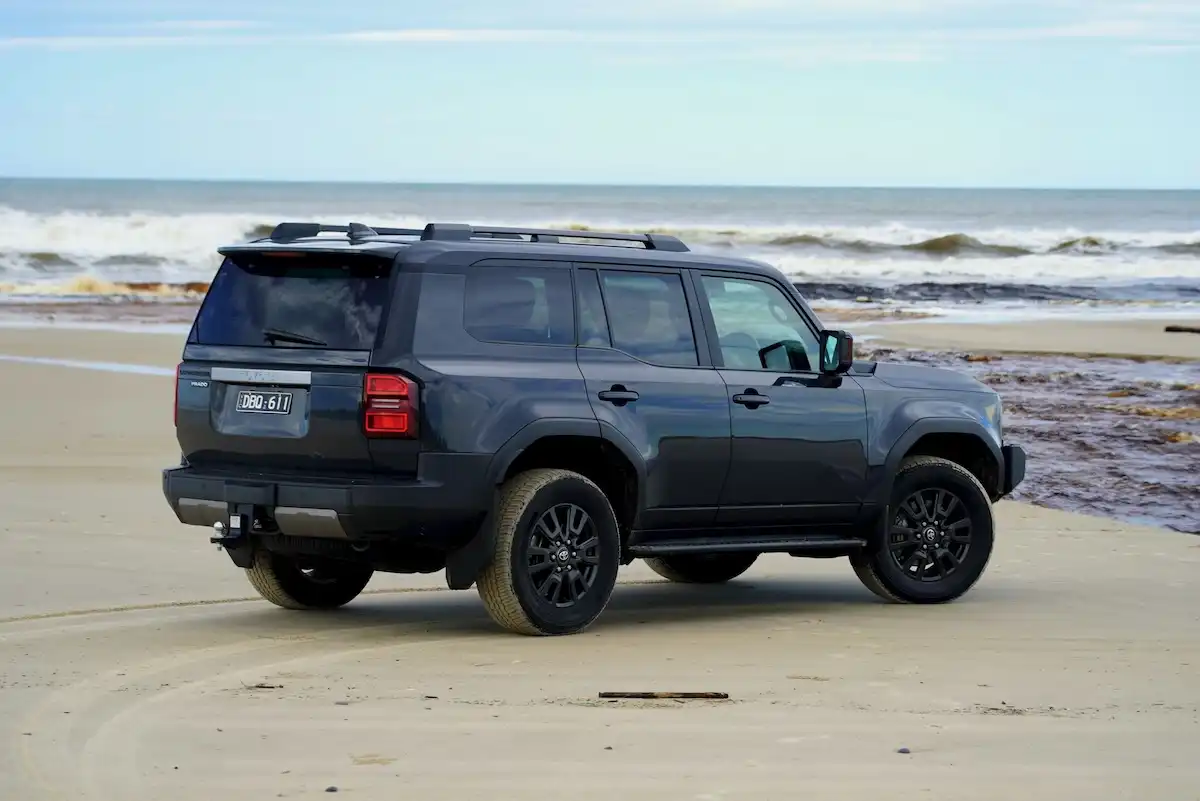
Five Toyota LandCruiser Prado Specs You Need to Know
-
Five-year/unlimited-kilometre warranty (can extend to seven years)
-
2.8-litre turbo-diesel with 48V mild-hybrid assist produces 150kW / 500Nm
-
Full-time 4x4 with low-range transfer case and locking centre differential standard
-
7.6L per 100km (claimed economy figures)
-
Five-star ANCAP safety rating (tested 2024)
Get in touch with one of our Car Buying Specialists today.
Request a quote
